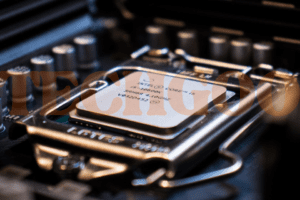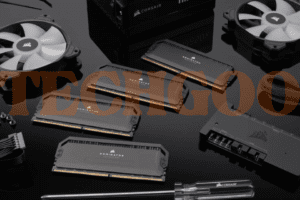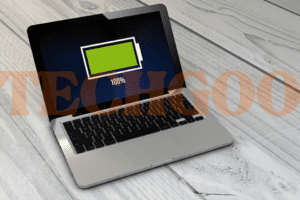To determine if your RAM is bad, look for signs such as the infamous Blue Screen of Death, sporadic PC freezes, declining performance, failed program installations, random reboots, corrupted files, missing RAM, or computer beeps. Additionally, you can test your RAM using the Windows Memory Diagnostic tool by launching it from the Start menu or running “mdsched.exe” in the Run dialog.
If you experience slow boot times, poor performance, unresponsive programs, or long loading times, it may indicate the need to upgrade your memory.
Signs Of Bad RAM
If you’re wondering how to know if your RAM is bad, look out for these signs: the infamous Blue Screen of Death, sporadic PC freezes, declining PC performance, failed attempts to install new programs, random reboots, corrupted files, missing RAM, and computer beeps.
Having a faulty RAM module can cause various issues with your computer’s performance and stability. If you suspect that your RAM might be the culprit, here are some signs to look out for:
- Blue Screen of Death (BSOD): One of the most common signs of bad RAM is encountering the infamous blue screen error on your computer. This occurs when your system encounters a critical error that it cannot recover from. If you notice frequent BSOD crashes, it could be an indication of faulty RAM.
- Sporadic PC Freezes: Another sign of bad RAM is experiencing random freezes or hangs on your computer. You might notice that your PC becomes unresponsive at times or freezes while performing certain tasks. This can be attributed to faulty RAM not properly storing and retrieving data.
- Declining PC Performance: If you notice a gradual decline in your computer’s performance, it could be due to bad RAM. Sluggishness, slow startup, delays in opening programs, and overall poor system responsiveness are all associated with faulty RAM.
- Failed Installation of New Programs: Installing new software or programs may fail or result in errors if you have bad RAM. You might encounter installation errors, crashes, or even system restarts during the installation process. This can be frustrating and a clear indication of faulty RAM.
- Random Reboots: A computer with bad RAM may randomly restart or shut down without any warning. These unexpected restarts can occur during normal usage, causing data loss and disruptions in your workflow.
- Corrupted Files: Faulty RAM can cause data corruption, resulting in errors or missing files. You may encounter file errors, data loss, or even system crashes when accessing or saving files. This can be problematic and affect your productivity.
- Missing RAM: Your computer may not detect all the installed RAM if some of it is faulty. In the BIOS or system properties, you may notice that the total RAM capacity is less than what is physically installed in your computer. This discrepancy can be an indication of bad RAM.
- Computer Beep: When your computer starts up, it performs a system check known as Power-On Self Test (POST). If your RAM is faulty, the system might emit a series of beeps during POST. This audible indication can help you identify potential RAM issues.
If you experience any of these signs, it’s advisable to test your RAM using diagnostic tools or consult a professional technician. Identifying and replacing the faulty RAM module can help resolve the issues and restore your computer’s performance and stability.
Remember, healthy RAM is crucial for optimal system functioning.
Testing Your RAM
Experiencing frequent crashes, slow performance, and corrupted files? These could be signs that your RAM is faulty. Testing your RAM can help you determine if it’s time for a replacement.
Windows Memory Diagnostic Tool
The Windows Memory Diagnostic tool is a built-in feature in Windows that allows you to test your RAM for any potential issues. To launch this tool and perform a RAM test, follow these steps:
- Reboot your computer: Start by rebooting your computer. This will ensure that the RAM test is performed on a clean slate.
- Launch the Windows Memory Diagnostic tool: After your computer restarts, press the Windows key and type “Windows Memory Diagnostic” in the search bar. Click on the corresponding result to open the tool.
- Choose the test type: The Windows Memory Diagnostic tool offers two test options – “Standard” and “Extended.” The Standard test is usually sufficient for most users, while the Extended test takes longer but provides a more thorough analysis. Select the test type that suits your needs.
- Schedule the test: Once you’ve selected the test type, you can either choose to restart your computer immediately and start the test or schedule it for the next time you reboot. Take note that scheduling the test may delay your computer’s startup, so plan accordingly.
- Observe the test results: During the test, the Windows Memory Diagnostic tool will check your RAM for errors. You’ll be able to see the progress and any error messages that may appear. It’s essential to take note of any errors detected as they indicate potential issues with your RAM.
- Take necessary action: If the Windows Memory Diagnostic tool detects errors in your RAM, it usually means that your RAM is faulty. In this case, you may need to replace the RAM module that is causing the problem.
Third-Party RAM Testing Software
In addition to the Windows Memory Diagnostic tool, you can also use third-party RAM testing software to check the health of your RAM. Here’s how you can do it:
- Download and install RAM testing software: Start by finding a reputable RAM testing software online and download it from a reliable source. Follow the installation instructions provided by the software.
- Run the software: Once the RAM testing software is installed, launch it on your computer. The software will guide you through the process of testing your RAM.
- Perform the RAM test: Depending on the software you choose, there may be various options for testing your RAM. Commonly, you can perform a quick test or an extensive test. Choose the test type that suits your needs.
- Review the test results: After completing the RAM test, the software will display the test results. Pay attention to any error messages or notifications indicating faulty RAM.
- Take necessary action: If the RAM testing software identifies issues with your RAM, it’s recommended to replace the faulty RAM module to fix the problem.
Remember, testing your RAM is crucial because faulty RAM can lead to various issues like system crashes, random reboots, and file corruption. By using either the Windows Memory Diagnostic tool or third-party RAM testing software, you can identify and address any RAM-related problems, ensuring optimal system performance.

Troubleshooting And Fixing Bad RAM
Signs of bad RAM include the infamous Blue Screen of Death, sporadic PC freezes, declining performance, failed program installations, random reboots, corrupted files, missing RAM, and computer beeps. Test your RAM by launching the Windows Memory Diagnostic tool or typing “mdsched.exe” into the Run dialog.
If you’re experiencing issues with your computer’s performance and suspect that the RAM may be the culprit, there are several troubleshooting steps you can take to identify and fix bad RAM. In this section, we’ll explore some common methods to help you resolve the problem.
Removing And Reinserting RAM Sticks
- Turn off your computer and unplug it from the power source.
- Locate the RAM sticks on your motherboard.
- Gently press down on the side clips to release the RAM sticks.
- Carefully remove the RAM sticks from their slots.
- Inspect the gold contacts on both the RAM sticks and the slots for any visible dirt or debris.
- If necessary, use a soft, lint-free cloth to clean the contacts.
- Once cleaned, reinsert the RAM sticks firmly into the slots.
- Ensure that the side clips lock into place, securing the RAM sticks.
Cleaning The RAM Slots And Contacts
- Similar to the previous step, turn off your computer and unplug it from the power source.
- Remove the RAM sticks and inspect the slots for any dust or dirt buildup.
- Use a can of compressed air to blow out any debris from the slots.
- If there are stubborn particles, use a soft brush to gently remove them.
- Clean the gold contacts on the RAM sticks using a soft, lint-free cloth.
- Once the slots and contacts are clean, reinsert the RAM sticks and secure them.
Swapping Or Replacing RAM Sticks
- If you have multiple RAM sticks, try swapping their positions in the slots.
- This can help determine if a specific stick is causing the issue.
- Alternatively, try using one stick at a time to identify a faulty RAM module.
- If a particular stick consistently causes problems, it may be defective.
- In this case, you can replace the faulty RAM stick with a new one.
Upgrading Or Replacing The Entire RAM Module
- If you’ve exhausted all troubleshooting steps and are still experiencing issues, it may be time to upgrade or replace your RAM module.
- Check your computer’s specifications to determine the compatible RAM type and capacity.
- Purchase a new RAM module that matches these specifications.
- Follow the manufacturer’s instructions to install the new RAM module.
- Ensure that it is securely seated in the slots and the side clips are locked.
Remember to take necessary precautions when handling computer components and always refer to your computer’s manual or consult a professional if you’re unsure about any step. Troubleshooting and fixing bad RAM can help improve your computer’s performance and resolve issues related to memory problems.
Frequently Asked Questions On How To Know If Ram Is Bad?
What Are The Symptoms Of Bad RAM?
Symptoms of bad RAM include Blue Screen of Death, PC freezes, declining performance, failed program installations, random reboots, corrupted files, missing RAM, and computer beeping.
How Can I Test My RAM?
To test your RAM, follow these steps: 1. Open the Start menu and search for “Windows Memory Diagnostic” or press Windows Key+R and type “mdsched. exe” into the Run dialog. 2. Reboot your computer to start the test. 3. The Windows Memory Diagnostic tool will check your RAM for any issues.
4. Once the test is complete, you will see the results and any errors found.
How Do I Know If I Need To Replace My RAM?
Signs that indicate you may need to replace your RAM include slow boot times, poor performance in daily tasks, and unresponsive or slow-loading programs.
How Do I Know If My RAN Is Burnt?
To determine if your RAM is burnt, look for these signs: 1. Frequent Blue Screen of Death (BSoD). 2. Random freezing or crashing of your computer. 3. Decreased performance and slow response times. 4. Issues when installing new programs. 5. Corrupted or missing files.
6. Unusual beeping sounds from your computer.
Conclusion
To determine if your RAM is bad, keep an eye out for certain signs. The infamous Blue Screen of Death is a clear indication that something is wrong with your RAM. If your PC freezes sporadically or experiences a decline in performance, it could be due to faulty RAM.
Another sign is if you’re having trouble installing new programs, as it may be caused by RAM issues. Random reboots, files getting corrupted, or missing RAM are also red flags. Lastly, if your computer emits beeping sounds, it could be an indication of bad RAM.
If you suspect that your RAM is bad, you can test it using the Windows Memory Diagnostic tool. Simply open the Start menu and type “Windows Memory Diagnostic”, then follow the instructions to perform the test. Recognizing the signs of bad RAM is crucial for maintaining optimal computer performance.
By identifying these signs early on, you can take necessary steps to replace your faulty RAM and ensure your system runs smoothly.




